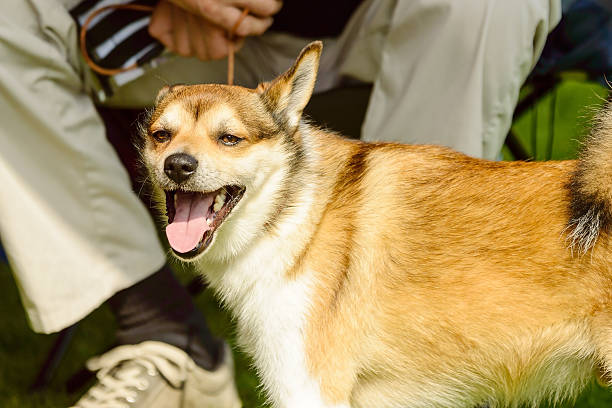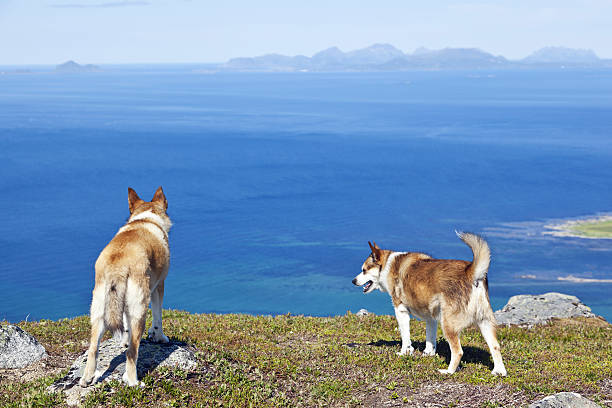Norwegian Lundehund

Breed History:
The Norwegian Lundehund is an ancient and rare breed developed in Norway, originally used for hunting puffins along the steep, rocky cliffs of remote islands like Værøy and Røst. The name "Lundehund" literally means “puffin dog” in Norwegian. These dogs were bred for their incredible agility and unique physical traits, allowing them to climb, squeeze into crevices, and retrieve puffins and their eggs from nests.
Their population declined dramatically in the 20th century due to hunting bans and disease, nearly becoming extinct. Thanks to conservation efforts in Norway, the breed survived and was officially recognised by kennel clubs in the mid-1900s. Though no longer used for hunting, the Lundehund remains a fascinating and spirited companion with a strong link to Nordic heritage.
|
Gender |
Height |
Weight |
|
Male |
35–38 cm |
7–9 kg |
|
Female |
32–35 cm |
6–8 kg |
Size – Small
Life Expectancy: 12–15 years

Breed Appearance:
The Norwegian Lundehund is a small, spitz-type dog with a compact, agile frame built for navigating rocky terrain. Its double coat is dense and weather-resistant, typically in shades of reddish-brown with black-tipped hairs, often combined with white markings. The tail is medium-length, bushy, and often curls over the back.
What makes the Lundehund truly unique is its anatomy: it has six toes on each foot, highly flexible joints, and ears that can fold shut—adaptations that helped it maneuver through narrow cliffside passages. Its wedge-shaped head, almond-shaped eyes, and alert expression give it a foxlike appearance.
Breed Type – Companion/Working:
Originally a hunting breed, the Norwegian Lundehund is now primarily kept as a companion dog. It is lively, alert, and inquisitive, often displaying cat-like agility and curiosity. While it forms strong bonds with its family, it can be reserved or shy around strangers, especially without early socialisation.
Lundehunds are independent thinkers, with a strong will and a quirky personality. They are known to be playful and amusing but may also be stubborn or aloof. Their working heritage gives them a love of problem-solving and exploration, making them fascinating pets for experienced dog owners.

Training:
Training a Norwegian Lundehund can be challenging due to its independent and often stubborn nature. While intelligent, it is not always eager to please and may resist commands if not properly motivated. Consistency, patience, and gentle, reward-based methods are key to successful training.
Early socialisation reduces shyness and encourages confidence, particularly around strangers and other pets. Training should be kept short and engaging to match the breed’s attention span. Because of their sensitivity, harsh corrections or forceful methods can be counterproductive.
Health & Care:
The Lundehund is generally hardy, but it has a unique health concern called Lundehund Syndrome, a gastrointestinal disorder that can affect digestion and nutrient absorption. While not all individuals are affected, it’s a known issue within the breed and requires careful diet management and regular veterinary monitoring.
Other than this syndrome, the breed is relatively healthy. Their light, athletic build helps prevent joint issues, and their small size contributes to longevity. Routine health care, including vaccinations, parasite prevention, and dental care, will help ensure a long, active life.

Living Conditions:
The Norwegian Lundehund is adaptable to various living environments, including apartments, as long as it receives enough mental and physical stimulation. It prefers cool climates and may be uncomfortable in hot or humid weather due to its thick coat.
A secure, fenced yard is ideal, as this breed has a strong exploratory instinct and is prone to squeezing through tight spaces. It enjoys being part of a household where it can be involved in daily routines and engage in play or puzzle games. Isolation or neglect can lead to boredom and behavioural issues.
Exercise:
Though small, the Lundehund is energetic and requires regular activity to stay healthy and content. Daily walks, play sessions, and mentally stimulating tasks—like food puzzles or agility games—help satisfy its natural curiosity and prevent restlessness.
Because of its history as a cliff-climber, this breed enjoys climbing, exploring, and navigating obstacles. Structured agility training or supervised outdoor exploration can be especially rewarding. It is important to avoid repetitive or monotonous activities, as the Lundehund thrives on variety and engagement.
Grooming:
The Lundehund’s dense double coat sheds moderately year-round and heavily during seasonal changes. Weekly brushing helps manage loose hair and maintain a healthy coat. More frequent grooming may be needed during shedding seasons to prevent matting and reduce hair around the home.
Bathing is only necessary when dirty, as the coat naturally repels dirt. Regular nail trimming, ear cleaning, and dental care are essential. The breed’s folded ears should be checked weekly for debris or signs of infection, especially if the dog spends time outdoors.

Advantages:
-
Uniquely adapted anatomy and rich historical background
-
Intelligent, agile, and playful with cat-like reflexes
-
Suitable for active households and small living spaces
-
Relatively healthy and long-lived when managed properly
-
Low grooming needs compared to longer-coated breeds
-
Curious and amusing personality that entertains and endears
Disadvantages:
-
Can be stubborn and challenging to train for novice owners
-
Prone to Lundehund Syndrome, requiring careful dietary management
-
Reserved or shy around strangers without proper socialisation
-
May become bored or destructive without mental stimulation
-
Prone to escaping through small gaps due to a flexible body and curiosity
-
Sensitive to harsh correction and requires gentle handling

